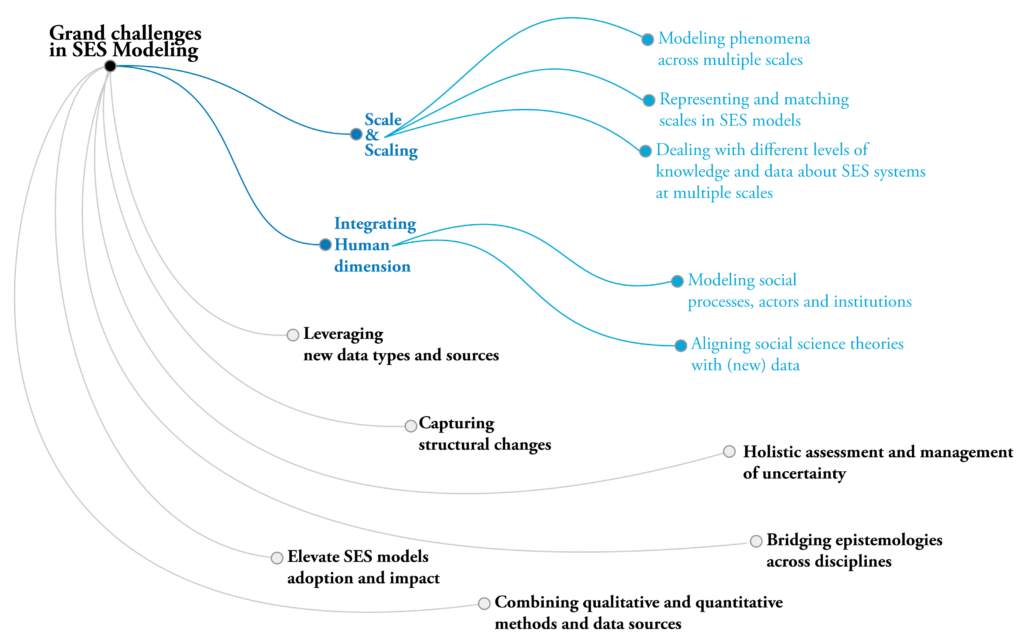Paper
- Eight grand challenges in socio-environmental systems modeling
- Socio-Environmental Systems Modelling, 2, 16226
- Elsawah, S., Filatova, T., Jakeman, A. et al.
- https://doi.org/10.18174/sesmo.2020a16226
Dealing with scale and scaling
With multiple co-authors, we published a paper in 2019 identifying and formulating 8 grand challenges that need to be overcome to accelerate the development and adoption of socio-environmental systems(SES) modelling, including climate-economy Integrated Assessment Models. The paper is the outcome of the corresponding SESYNC workshop.
We detail here one of the two grand challenges directly related to our field of study, and which we aim to disentangle throughout our ERC : Dealing with scale and scaling, the other being : Integrating the human dimension in models.

Socio-environmental systems operate across a variety of spatial, temporal and organizational scales. Models of human behavior are often designed for the individual or small group scale while many environmental problems are global in nature. Computational models that support decision-making vary widely in spatial and temporal coverage (from m2 to entire continents and from minutes to decades) as well as in levels of the social dimension. For the latter scholars go from studying behaviour of individual households, firms and farmers to the society as a whole, with its values and informal and formal institutions, including markets that shape our economy. Hence, they use different type & resolution of socio-economic data, and various social science theories: from perfectly rational optimizers, which are easy to aggregate, to boundedly rational behaviorally-rich agents prone to social influence, for which aggregation is not any more a sum of its parts due to non-linearities.
We argue that we need first of all clarity on the representation of scales in environmental and socio-economic subsystems, and the clear matching a conceptual representation of variables and processes with corresponding data. Furthermore, since spatial and temporal resolutions of social and environmental systems often diverge, they need to be coherently matched to allow coupled modeling: this requires advancements in upscaling and downscaling methods of connected subsystems.
The choice of a model’s spatial, temporal or organizational resolution will have a significant impact on the simulation results. For instance, in representing social processes, the choice of the time horizon (climate adaptation costs & benefits in 2030 or 2050), of the intertemporal preferences ( e.g. discounting rate), the length of a single time step (models estimating results quarterly, annually, once in 5 or once in 50 years) could reprioritize policy options.
In the paper we discuss extensively other central issues connected to scaling for SES, as the granularity, the data availability and collection for different systems and levels, and available aggregation paradigms when modeling phenomena across multiple scales. This grand challenge calls for SES models that trace phenomena across scales instead of focusing on one, and demands an explicit representation of cross-scale feedbacks.
Advancing the following priority areas of research will enable appropriate representation of scales and cross-scale dynamics in SES modeling:
- Evaluation and comparison of different methodological choices related to scale
- Developing accessible resources on scaling methods
- Using different social models at different scales to enable the vertical interactions within the social subsystem and match with cross-scale processes in SES
*Graphics by element6
